Update: the renovation was completed in 2020 and machine tool manufacturer Gosiger Industries moved into two of the six floors. The building’s other tenant is coworking space Genuine Work which opened in 2021. According to its leasing website, three spaces are still available.
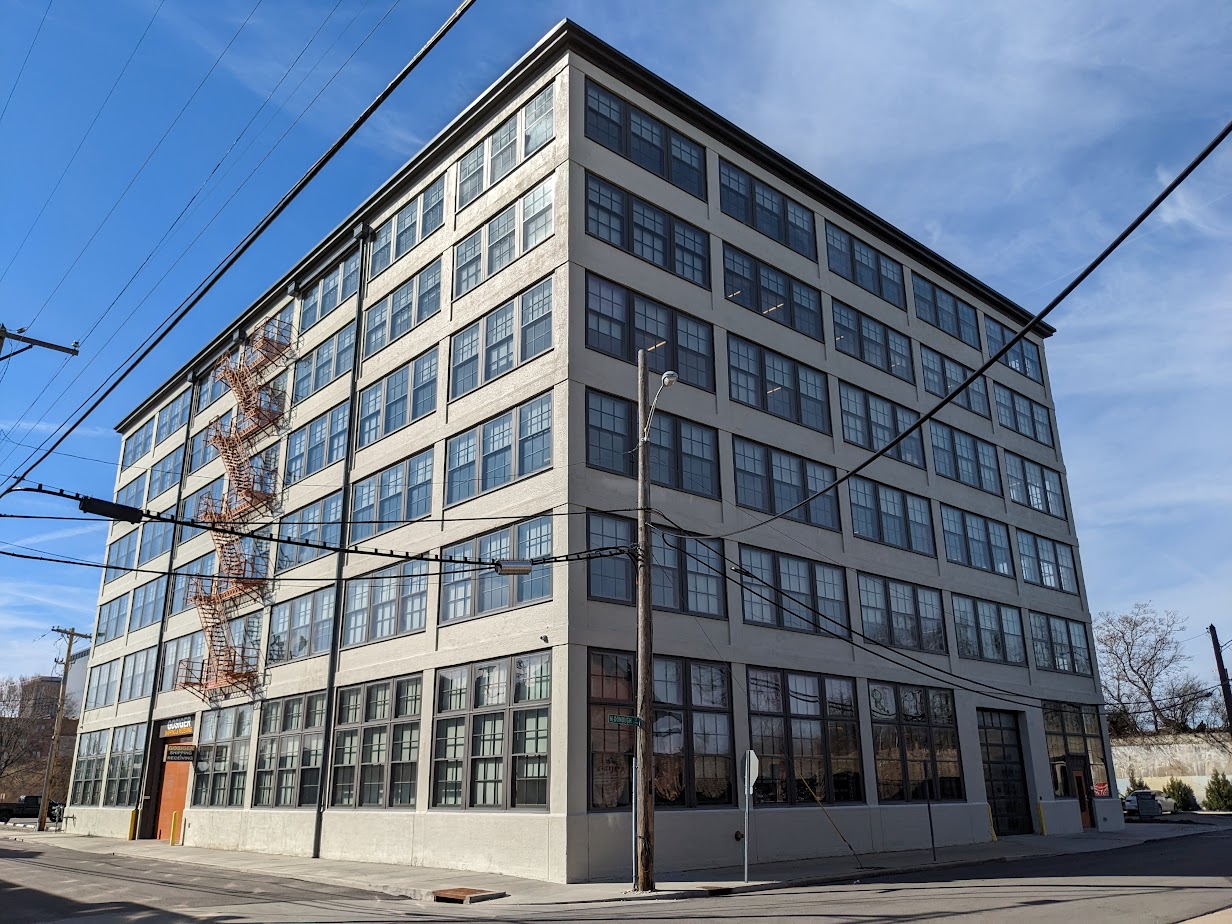
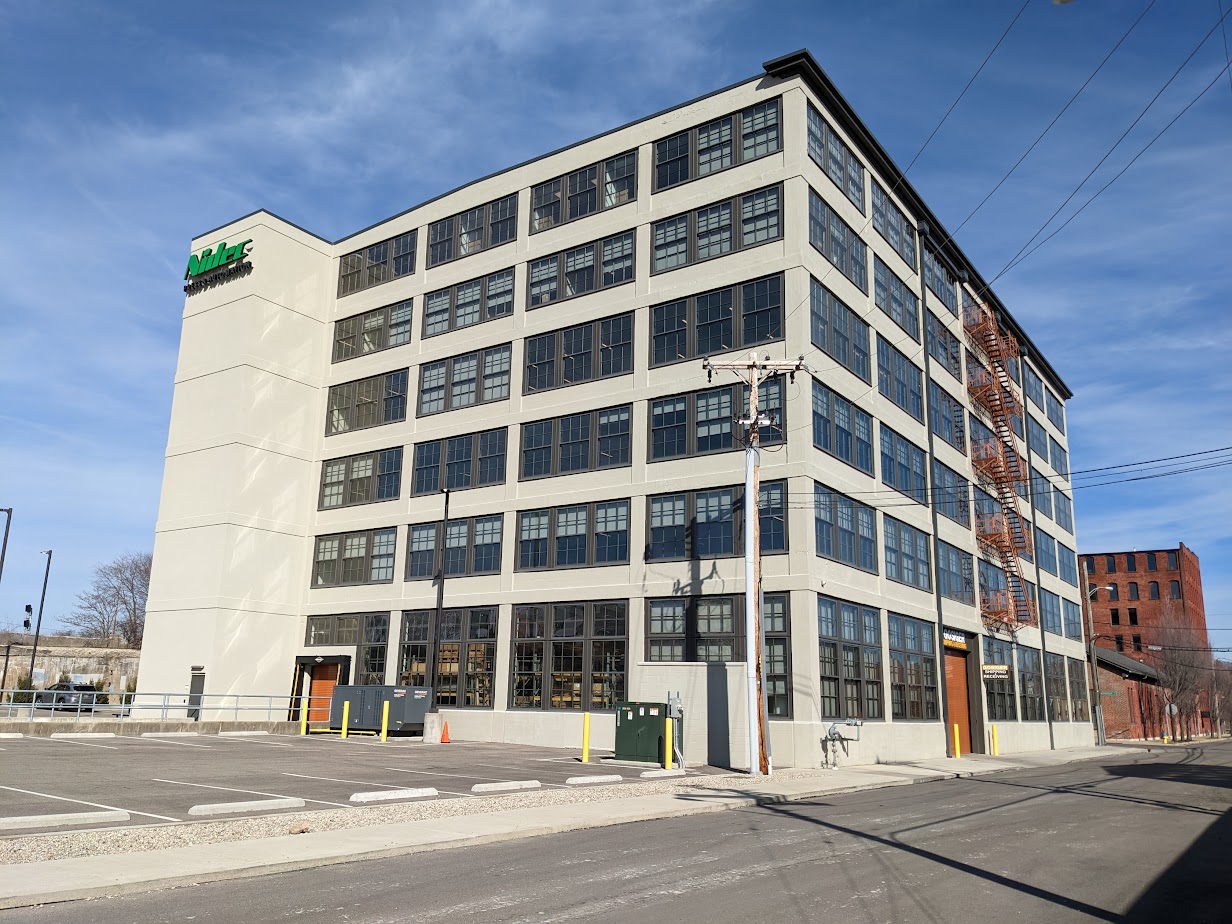
Original article (July 2019):
The renovation of a historic building near the Oregon District, 15 McDonough Street, is now officially underway.
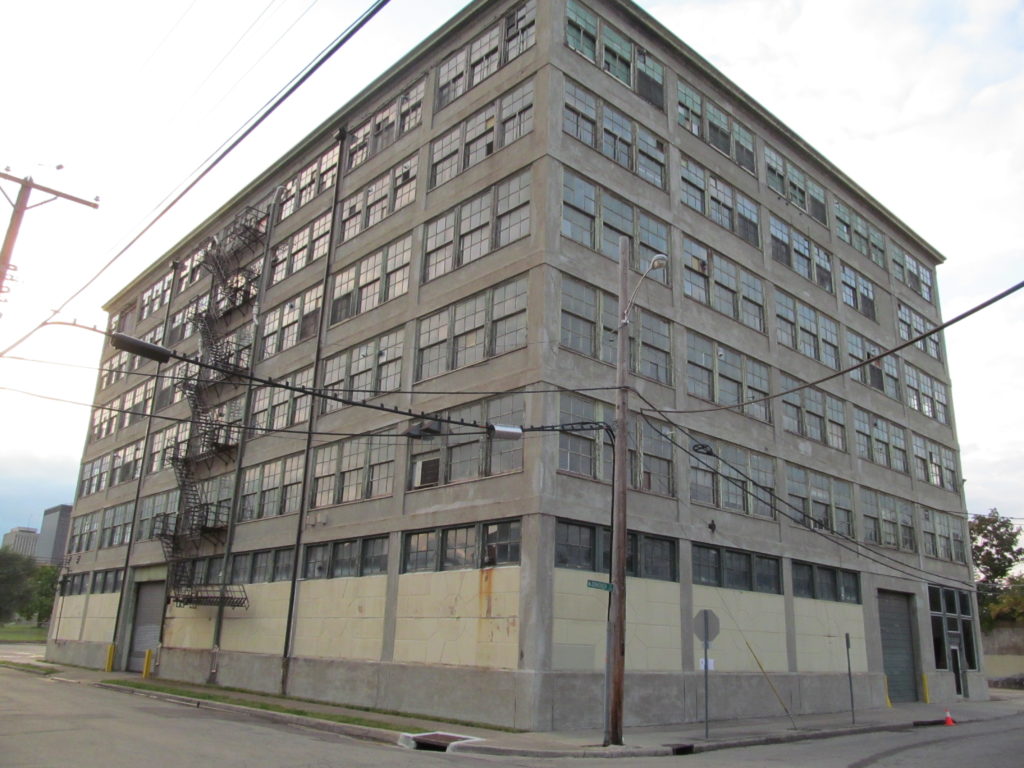
The structure has recently come to be known as the Dayton Motor Car Building, but reports have mixed up the history of the building with the surrounding area and other structures that have been demolished.
Specifically, this building was not built in 1875 as has been reported, nor was it part of the previous incarnation of the company that made farm implements. Let’s take a closer look at the history of this site and the companies that occupied it.
In 1869, John Williams Stoddard, who had previously owned a linseed oil and paint business, teamed up with John Dodds to launch a farm implement company. They specialized in horsehair rakes in the early years, but in 1873 their shop buildings were lost to fire.
Stoddard and Dodds rebuilt with larger brick structures, but these did not include the building that survives today. Instead, the 1875 buildings were closer to Third Street and the train tracks, as seen below in an 1889 image.

On the 1887 map below, the 1875 buildings are labeled “D” and “C” just to the right of the tracks. The circled area is where 15 McDonough will eventually be built, but as you can see it is not there yet.
These structures, along with smaller ones to the south in the company’s growing complex, are what became Dayton’s “farm implement center,” not 15 McDonough.
By the 1890s, Dayton had risen to third in farm implement production in the state of Ohio with the Stoddard Manufacturing Company (a name it took on in 1879) as its largest firm. One of its popular products was called the Triumph Broad Case Seeder and Cultivator.
In 1896, however, Stoddard began producing bicycles, taking advantage of a nationwide craze. (At about the same time, the Wright Brothers were doing the same on the west side of Dayton.) Stoddard Manufacturing later moved on to automobiles, with the formation of the Dayton Motor Car Company in 1904. The size of their factory was quickly doubled to over a dozen buildings.
One of these new structures was 15 McDonough Street, erected in 1908. It was used as a machine shop, tool room, and assembly room for cars and also had office spaces on the 2nd floor. A similar structure was built next to it, forming a full block of buildings connected to the two 1875 structures seen above.
Those four buildings can be seen in the postcard below. The roof of 15 McDonough is visible and circled in red. (Later, the train tracks were elevated making this type of view impossible.)
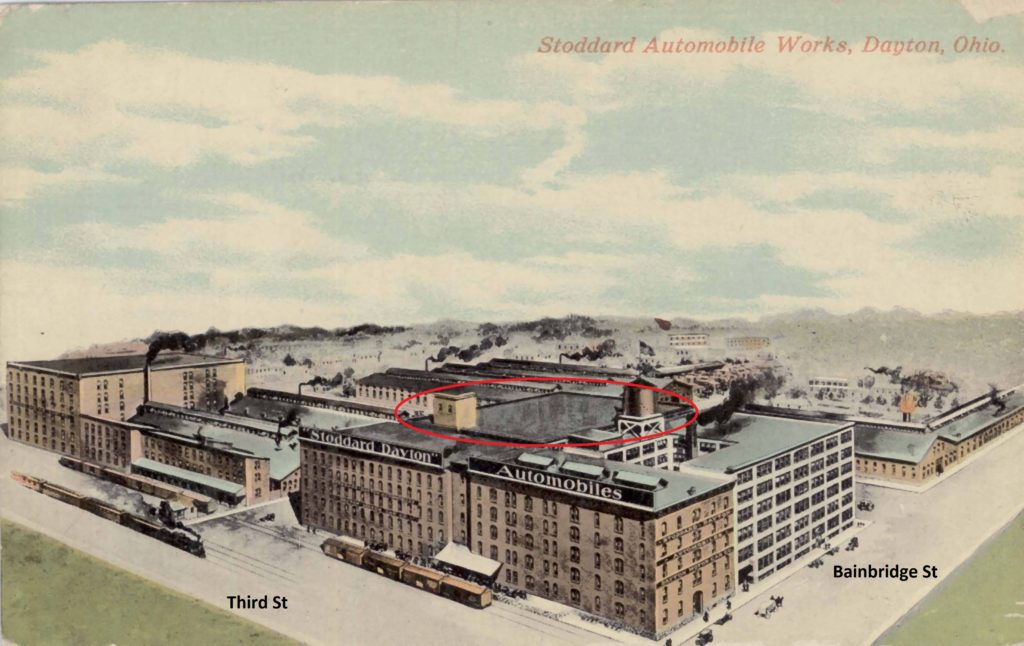
And for comparison, a map from 1918 with 15 McDonough again circled (note the different orientation compared to the map above; the twin 1875 buildings are still labeled C and D):
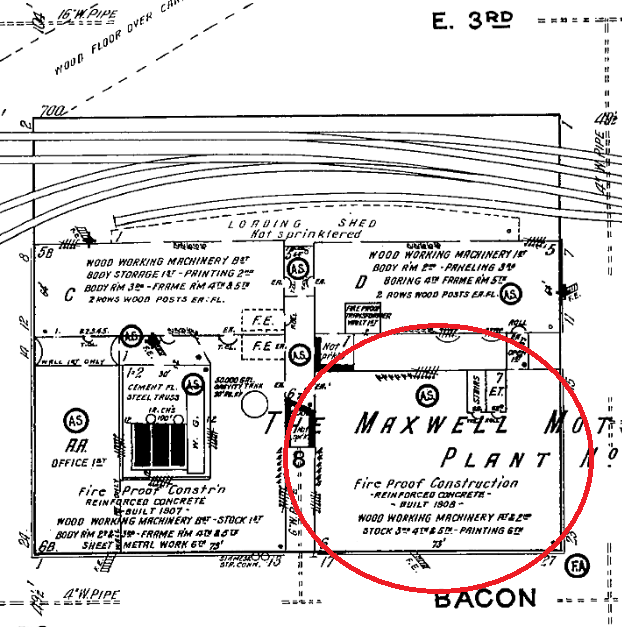
Even without these photos and maps, we can conclude that 15 McDonough dates to the early 1900s. Its reinforced concrete construction and large windows allowing abundant natural light to fill the interior spaces is a clear example of the “daylight factory” style, which emerged around 1900 and was used by John H. Patterson for NCR’s factory buildings. (I explore this in more detail in my book Lost Dayton, Ohio.)
As for the automotive history, the Dayton Motor Car Company failed in bankrupcy in 1913 after less than a decade in business. As you can see in the map above, 15 McDonough was next used by the Maxwell Motor Company. By 1950, the auto industry had left this area, and the building was an ice cream cone factory for the National Biscuit Company.
Out of the four buildings that once filled the block, 15 McDonough is the only survivor today.
All are listed as contributing structures on the Dayton Motor Car Company Historic District Nomination Form (1984), but even status on the National Register does not guarantee a building’s survival.
An investor purchased one of the 1875 brick buildings in the late 1980s and spent $250,000 to restore it. But in 1993, vandals set a fire that destroyed the building’s roof. The city allowed demolition on economic hardship grounds the following year.
The other reinforced concrete building on the block, 15 Bacon Street aka the M.D. Larkin Building, met its end in 1995 when the city of Dayton used a $200,000 ED/GE grant to demolish it and give the land to Module 21, a maker of custom wood cabinets then located at 15 McDonough. By then the building had been stripped of its windows and scrap metal, declared a public nuisance, and seized by the state for tax defaults.
Here’s a contemporary aerial of a now lonelier 15 McDonough to compare to the earlier map above.
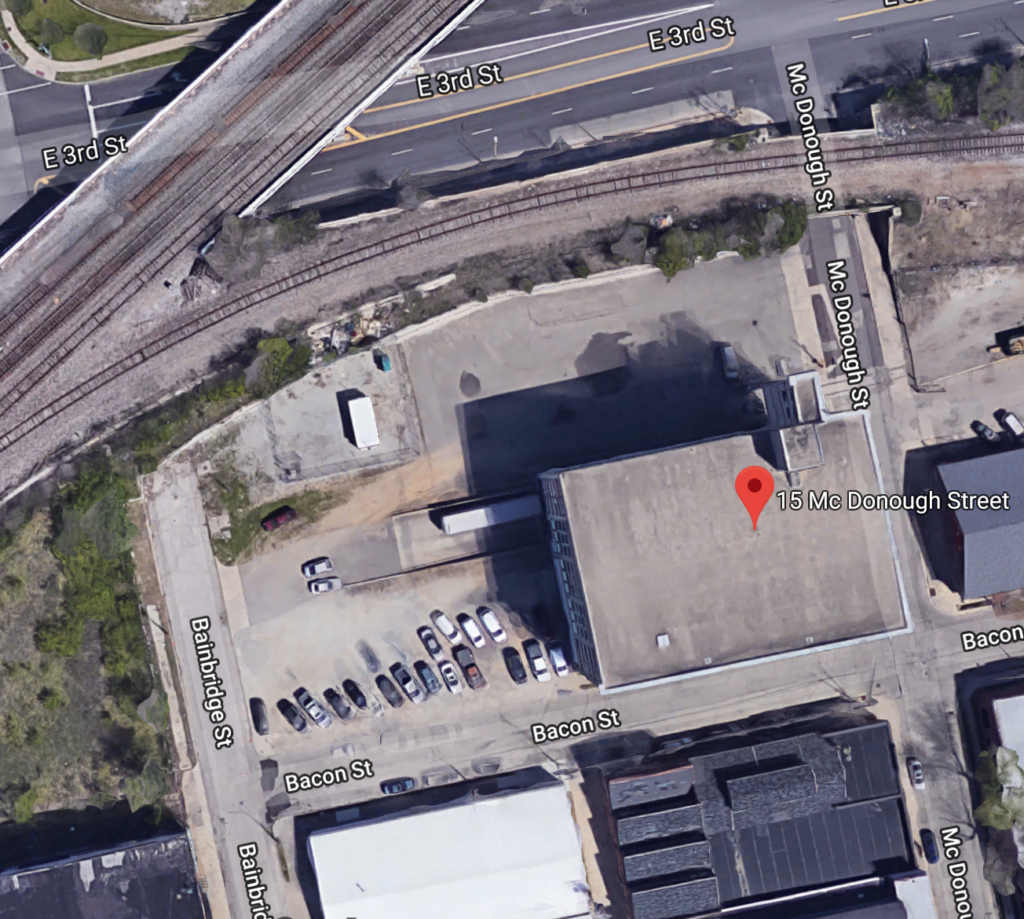
Sources
Dayton Metro Library historic images
Sanborn Fire Insurance Maps
Dayton Motor Car Company Historic District Nomination Form
Dayton Daily News
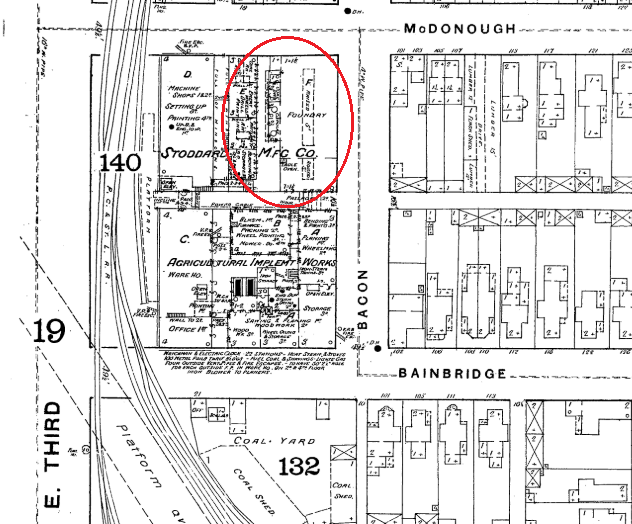




This six-story building for the Dayton Motor Car Company was constructed in 1908. The reinforced concrete structure was built using the “Kahn System” of reinforcement marketed by the Trussed Concrete Steel Company of Detroit, Michigan. The Kahn System was invented by Julius Kahn, younger brother of architect Albert Kahn.
On February 20, 1908, shortly after the building was completed, fire broke out on the fourth floor and burned hot enough to damage some of the concrete. The damage was limited to the fourth floor, but fire spread through a connecting opening into the adjacent brick and timber factory building of Dayton Motor. This building was entirely consumed by the flames and everything inside was destroyed.
There is an extensive illustrated description of the fire here:
https://babel.hathitrust.org/cgi/pt?id=nyp.33433066420377&view=1up&seq=145
I worked there when it was Consolidated Cone Corp. circa 1980.
Would love to get with my old co-workers.
Daniel my mom worked there when it was consolidated also. She also worked there when it was Nabisco.I love that ol building. I can remember picking her up or taking her to work sometimes when I was young we get to go in the lobby and wait for her if picking her up and seeing some of her coworkers. Do you remember Dennis‘s last name or Debbie the secretary‘s last name?